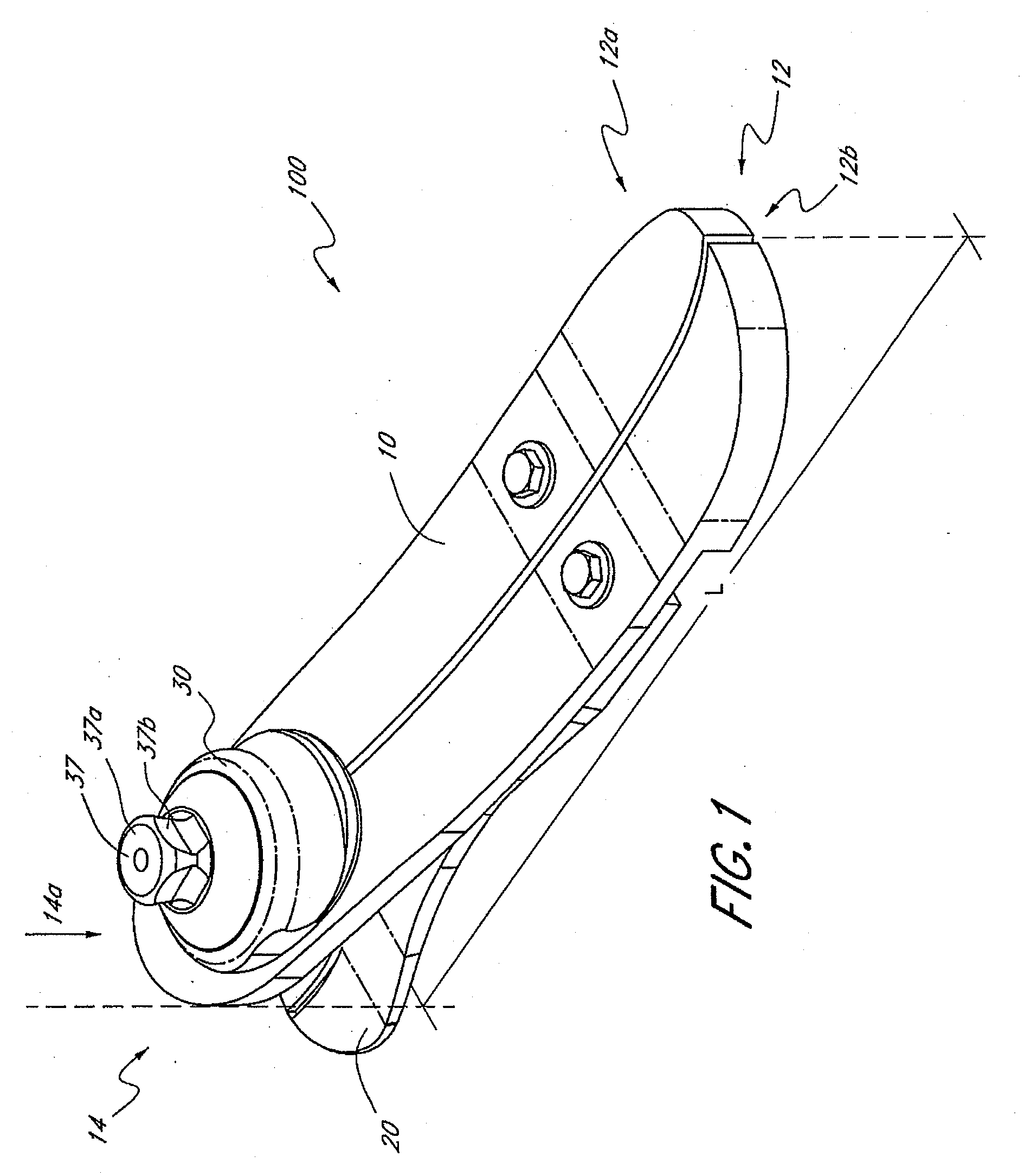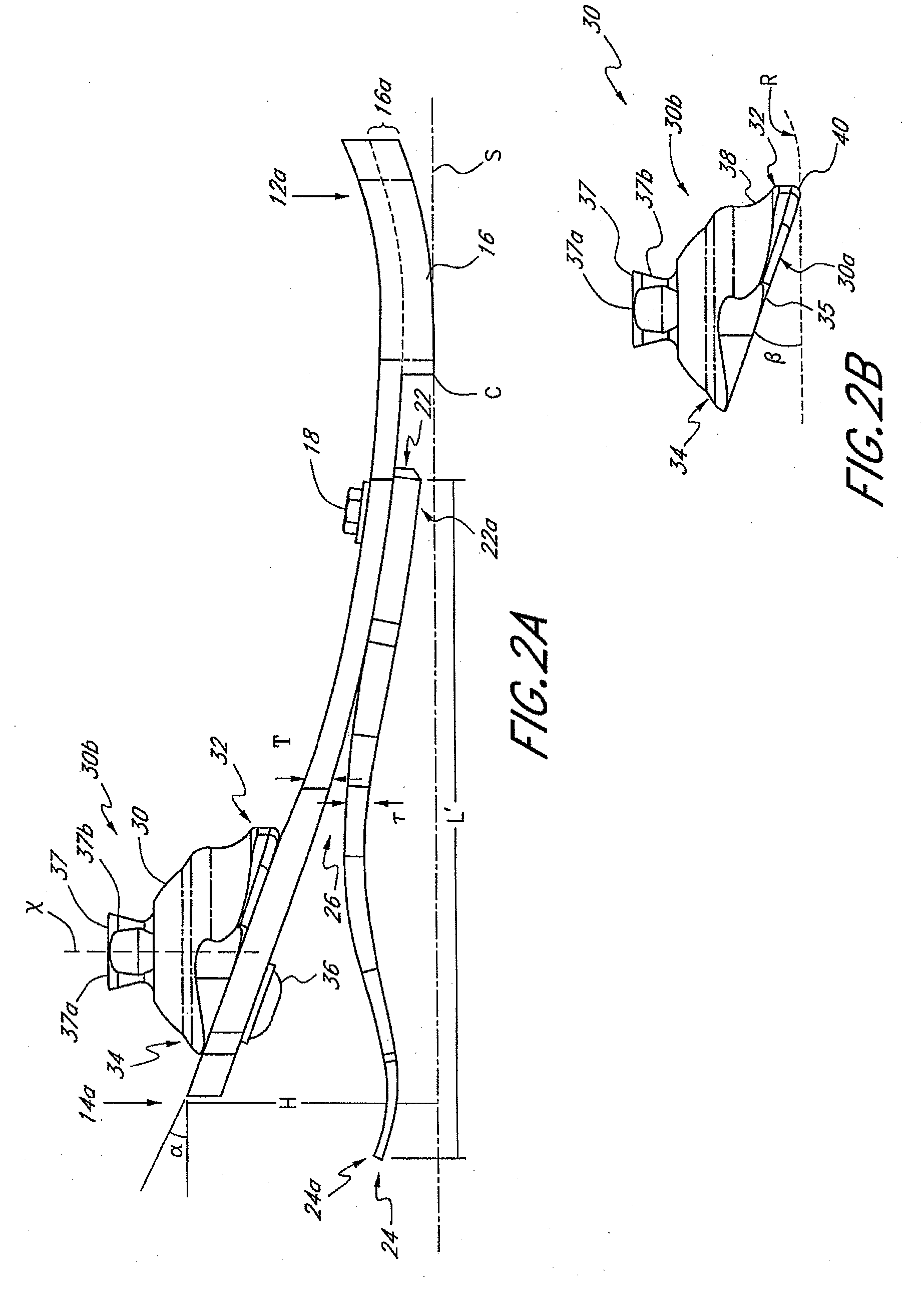Low profile prosthetic foot
a low-profile, prosthetic foot technology, applied in the field of low-profile prosthetic feet, can solve the problems of less efficient energy storage and release during motion of the foot, difficult to wholly contain in a cosmesis, bulky design of the foot, etc., and achieve the effect of increasing strength and resilien
- Summary
- Abstract
- Description
- Claims
- Application Information
AI Technical Summary
Benefits of technology
Problems solved by technology
Method used
Image
Examples
Embodiment Construction
[0037]FIGS. 1-2A illustrate one embodiment of a prosthetic foot 100. Preferably, the prosthetic foot 100 comprises a foot member or support 10 which may have an elongate configuration having a length L extending between a front end 12 and a rear end 14. As used herein, length L refers to the horizontal length of the foot member 10 along a plane parallel to a support surface S on which the prosthetic foot 100 rests. In one embodiment, the length L may be between about 18 and 30 cm, corresponding to the specific size of the prosthetic foot 100. In one preferred embodiment, the length L is about 23 cm. The ends 12, 14 of the foot member 10 preferably have rounded or curved edges. The foot member 10 preferably also comprises an anterior portion 12a and a posterior portion 14a, wherein the anterior portion 12a can include a front toe portion 12b. In one preferred embodiment, the foot member 10 can be generally shaped like the sole of a human foot and the length L be approximately equal t...
PUM
 Login to View More
Login to View More Abstract
Description
Claims
Application Information
 Login to View More
Login to View More - R&D
- Intellectual Property
- Life Sciences
- Materials
- Tech Scout
- Unparalleled Data Quality
- Higher Quality Content
- 60% Fewer Hallucinations
Browse by: Latest US Patents, China's latest patents, Technical Efficacy Thesaurus, Application Domain, Technology Topic, Popular Technical Reports.
© 2025 PatSnap. All rights reserved.Legal|Privacy policy|Modern Slavery Act Transparency Statement|Sitemap|About US| Contact US: help@patsnap.com



